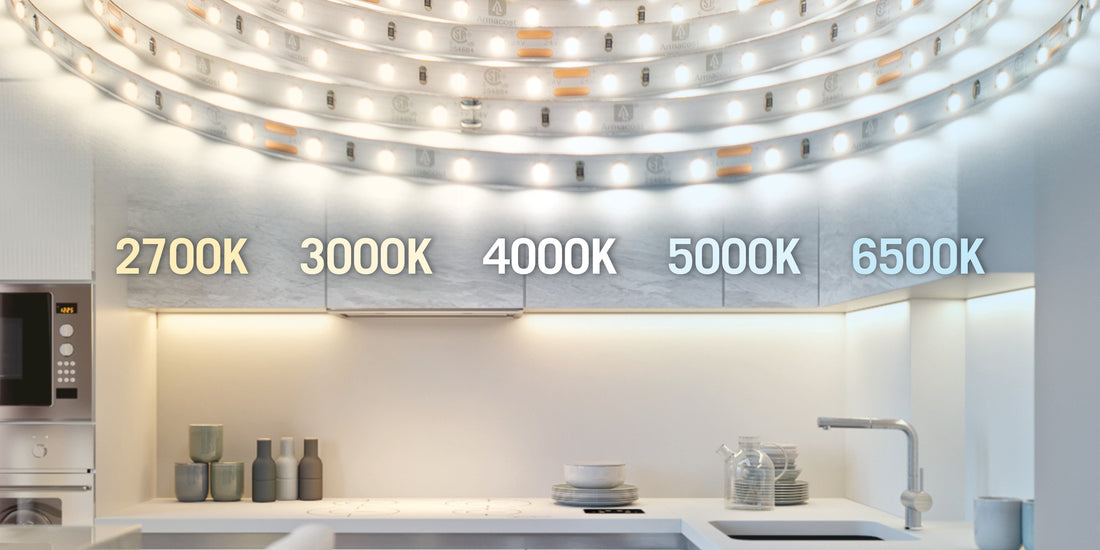What Does LED Color Temperature Mean?
When starting a new LED lighting installation project, a critical decision is determining the best color temperature for the installation. LED color temperatures can look vastly different from one another and range from a warm candlelight glow to the cool bright fluorescent color. LED lighting that has crisp, blue look would have a “cool” color temperature; a more yellow looking LED light would be “warm” in color temperature. Armacost Lighting offers a variety of LED lights in a wide range of color temperatures, including LED strip lights, LED puck lights, and LED tape light kits.
Measuring LED Color Temperatures
LED lighting color temperature is measured in Kelvin (K) and can range from 1700K to 7000K, with 1700K being a dull match flame glow and 7000K being bright “blue-ish” in color. LED light fixtures (LED strip lights, puck lights, linear lighting, etc.) that have a lower Kelvin rating will appear warmer. While those with a higher color temperature will appear cooler and sometimes blue.
Here is a quick guide to understanding LED lighting color temperatures on a scale:
1700K – dull warm glow, similar to a match flame
1900K – warm, similar to candlelight
2700K – warm white, similar to incandescent bulb
3000K – soft white, similar to halogen bulb
4000K – bright white, similar to fluorescent lighting
5000K – daylight, very bright & similar to sunlight
6500K – cool white, crisp & blue tinted, similar to a computer monitor
7000K – ultra-cool, similar to bright halogen at highest setting

What is the difference between 2700K vs 3000K, or 2700K vs 4000K, or 3000K vs 4000K?
The difference between common LED light color temperatures is the color undertone, if any, that the LED light bulbs contain. Lower, warmer color temperatures have red, yellow, and amber undertones. Higher, cooler color temperatures contain a higher amount of crisp, blue undertones.
In most residential and commercial lighting applications, LED lighting fixture color temperatures will range from 2700K to 5000K. This range of color temperatures provides the greatest flexibility for usable light for both residential and commercial applications. 3000 kelvin light is the most common choice for LED lights for homes and is often referred to as soft white. 3000K color temperature is more neutral compared to 2700K or 4000K. 2700K light color is much softer and warmer than 4000K light color, and is more similar to a traditional incandescent light bulb.

What applications are best for 5000K and 6500K LED Lights?
The “higher” cooler color temperatures can be used to replicate natural daylight and are often found in industrial or specific commercial applications where ultra-bright cool light is required. Examples of cool color temperature LED lighting applications include work environments, commercial & retail displays, and study lights. While the soft and warmer temperatures are often found in under cabinet lighting applications or where dimmable LEDs may be preferred.
Making the switch from traditional incandescent lamps to energy efficient LEDs? Check out our Incandescent, Halogen & Fluorescent Bulb Conversion to LED Light Bulb Color Temperature blog article to learn the difference between wattage, lumens, and color temperature for LED lights.





